Appendix A Sample Configurations of This Data Service
The software architectures of Oracle 9i and Oracle 10g are different. As a result of these differences, the configuration of resources and resource groups for the Sun Cluster Support for Oracle RAC depends on the version of Oracle that you are using. For each version of Oracle that this data service supports, the configuration of resources and resource groups also depends on the combination of storage management schemes that you are using for Oracle files.
The subsections that follow illustrate the configuration of resources and resource groups for typical combinations of storage management schemes for Oracle 9i and Oracle 10g on the SPARC® platform. On the x86 platform, no Oracle UDLM resource is required.
Sample Oracle 10g Configurations
Figure A–1 Configuration of Oracle 10g With Solaris Volume Manager for Sun Cluster
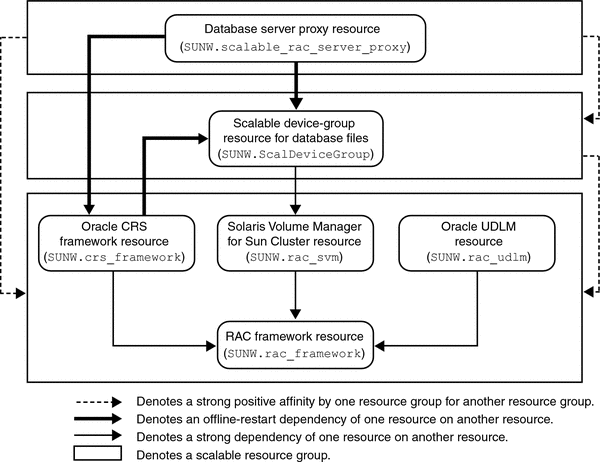
Figure A–2 Configuration of Oracle 10g With Solaris Volume Manager for Sun Cluster and Sun StorEdgeTM QFS Shared File System
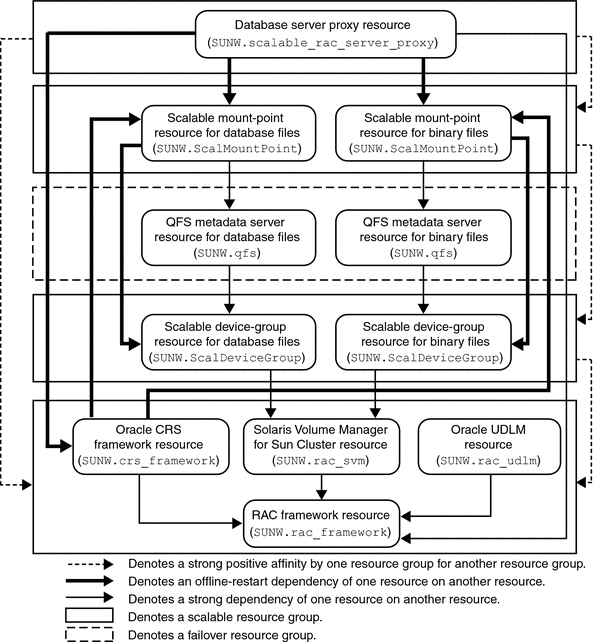
Figure A–3 Configuration of Oracle 10g With Sun StorEdge QFS Shared File System and Hardware RAID
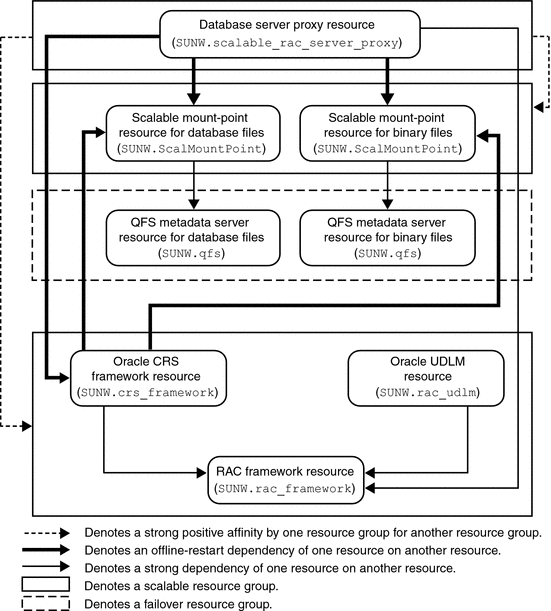
Sample Oracle 9i Configurations
Figure A–4 Configuration of Oracle 9i With Solaris Volume Manager for Sun Cluster

Figure A–5 Configuration of Oracle 9i With Solaris Volume Manager for Sun Cluster and Sun StorEdge QFS Shared File System
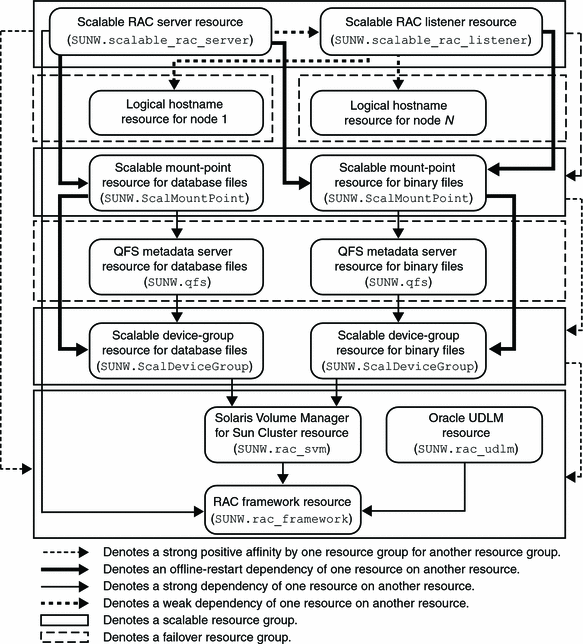
Figure A–6 Configuration of Oracle 9i With Sun StorEdge QFS Shared File System and Hardware RAID
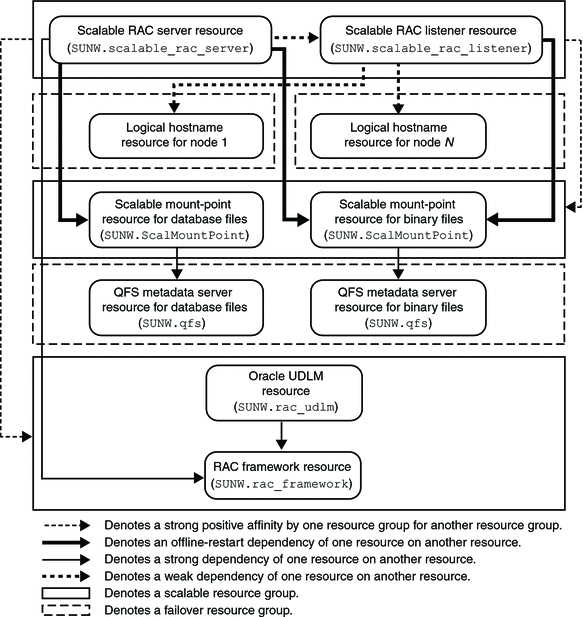
- © 2010, Oracle Corporation and/or its affiliates
